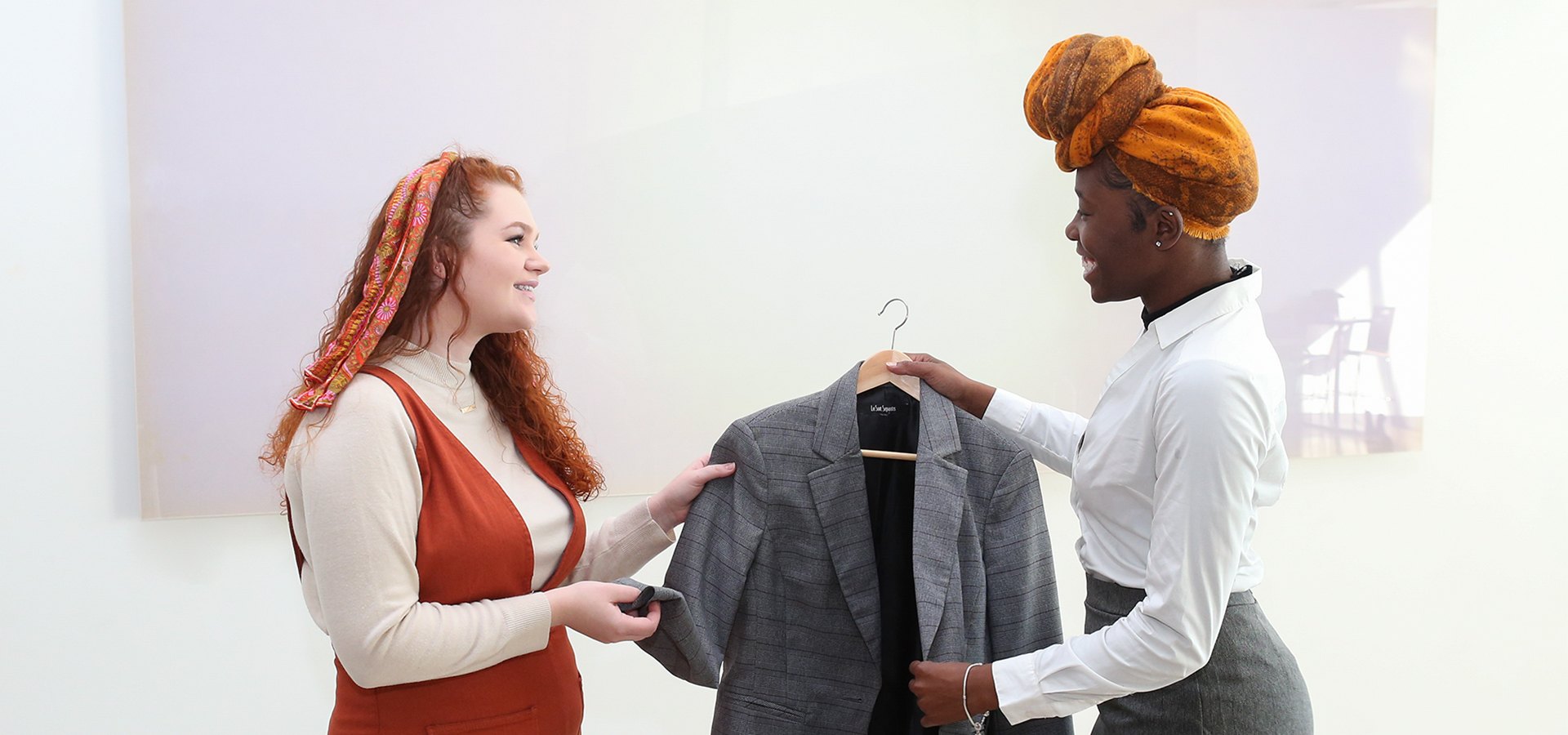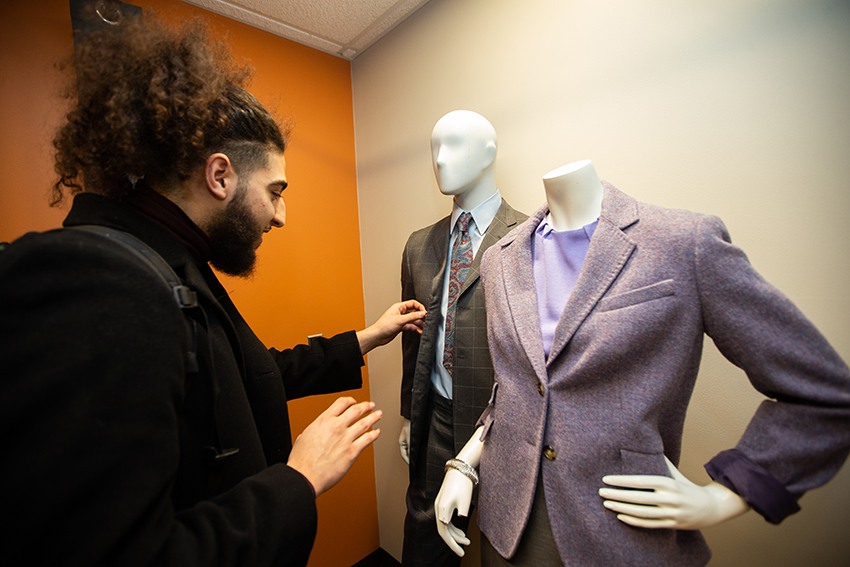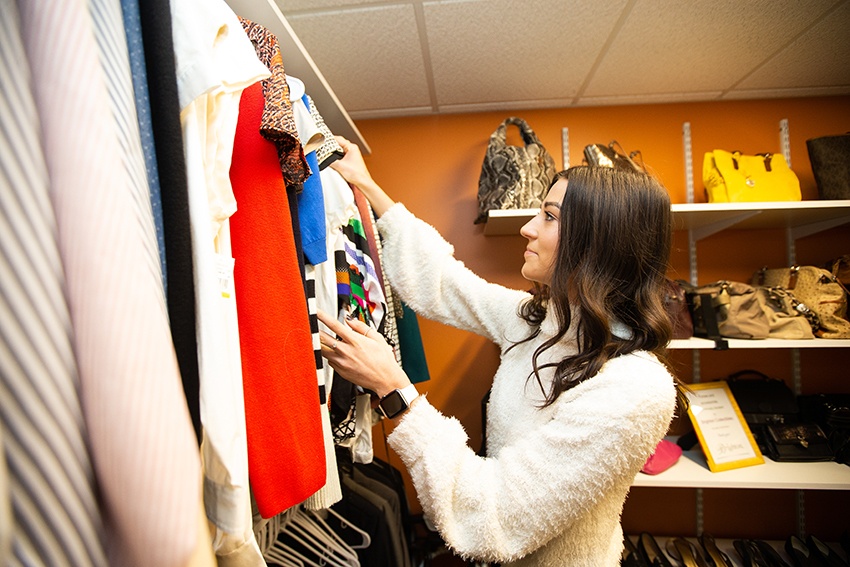

Dressing in a COVID world: A pandemic's impact on the multi-billion dollar fashion industry
BGSU apparel merchandising and product development expert Marian Zengel: Employees’ 'look' reflects weeks or months they’ve spent at home
By Kandace York
Workplace apparel will never be the same.
As employees trickle back to the office, their clothes reflect the weeks or months they’ve spent away from the workplace.
Perhaps they were trying to keep up with their children’s schoolwork while balancing a career. Perhaps they stayed away from loved ones who were in the high-risk group. Or, perhaps they were in the high-risk group and physically distanced for weeks or months.
“COVID-19 brought financial uncertainty and insecurity, and spending on fashion apparel quickly decreased,” said Marian Zengel, assistant teaching professor and coordinator of Bowling Green State University’s top ranked apparel merchandising and product development program.
The apparel merchandising and product development (AMPD) program at BGSU is a comprehensive program that focuses on preparing future professionals for exciting, challenging and fast-paced careers in the fashion industry.

Virtual workplaces affected fashion
At a time when people felt like their lives were full of discomfort, they found comfort in their closets.
“Everyone joked about attending Zoom meetings in their pajamas, but it’s not far off from actuality,” Zengel said. “People were wearing knit leggings versus pencil skirts, and polos versus button-downs with neckties. Because we were all experiencing the same environment it became acceptable to wear a ball cap to a meeting. It was a nice change and it built camaraderie.”
This fall, Zengel predicts, expect a combination of styles. Once among their peers and colleagues, employees may want to return to their previous dress habits, including “dress to impress.” As time goes on, though, people may prefer the comfort aspect of quarantine fashion and incorporate that into their work wardrobe.
Zengel, who teaches courses in fashion forecasting and 20th Century fashion, predicts consumers will stick with the basics as they often do historically in times of uncertainty.
Color may offer sense of outlook. Fall hues tend to be more muted, so the difference may not be dramatic right away. More telling will be the spring, Zengel said, when colors will be either brighter, reflecting optimism about the future, or more pastel, reflecting a cautious approach.
“Consumers accept or reject styles that are offered," Zengel said. "Time will tell what the general mood will be then.”

The advent of face coverings
The last time face coverings were featured so prominently in society was the 1918 influenza pandemic.
Today, face coverings are more than “in.” For many situations and locations, they are recommended or required.
Face coverings have changed just in the last few months. “When quarantine first happened, they were a novelty item, and the fabrics reflected that," Zengel said. "People were initially making them from their fabric stash, which included a lot of quilting fabrics that are designed with what are called conversational prints and patterns.”
Now, she said, knit jersey fabrics, in solid colors, are more typical.
“As we head back into the workplace, it may not be as acceptable to wear a face covering with cats and bunnies or sports teams on it," Zengel said. "They will coordinate to the event, whether you’re in a board room or job interview.”
One of the many positives in the fashion profession’s response, Zengel said, is that face coverings are available at all price points – from the practical to luxury fashion accessories that resemble wearable art.
Fashion industry mogul Burberry has included, in its fall line, a “bonnet visor,” Zengel said, which looks like a modified face shield.
2018 vs. 2020
It’s important to remember, Zengel said, that most clothing in stores or online today was planned up to two years ago. Fashion forecasting predicts trends long before it reaches the consumer, and no one in 2018 expected the COVID-19 pandemic.
“Fashion designers cannot force a style on consumers; it is the consumers who decide what to purchase,” Zengel said. “Returning to work and school, consumers will want comfortable clothing regardless of the style, and comfort relates to the fabrics and textiles used in the product.”
Updated: 05/10/2023 04:55PM
